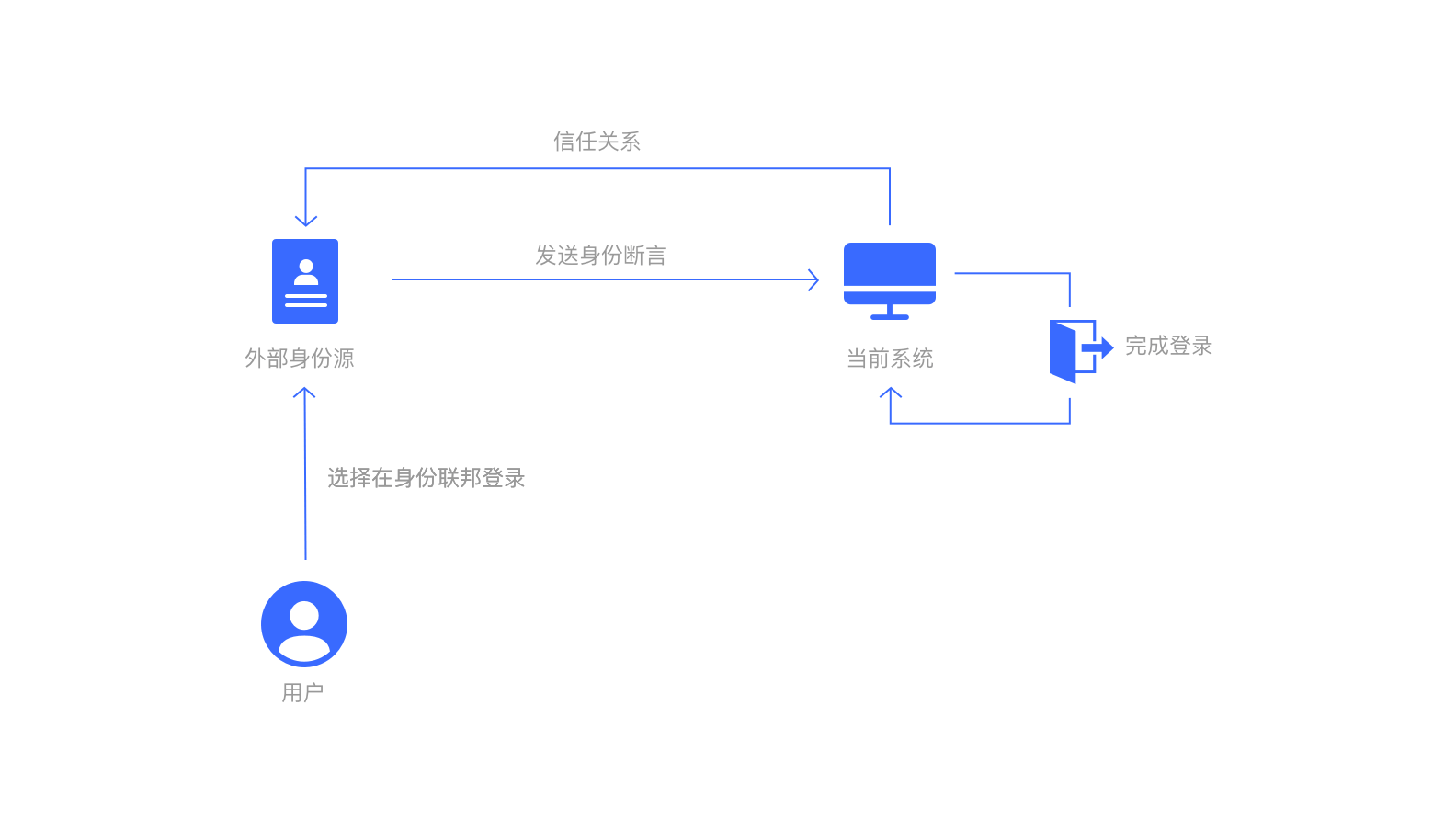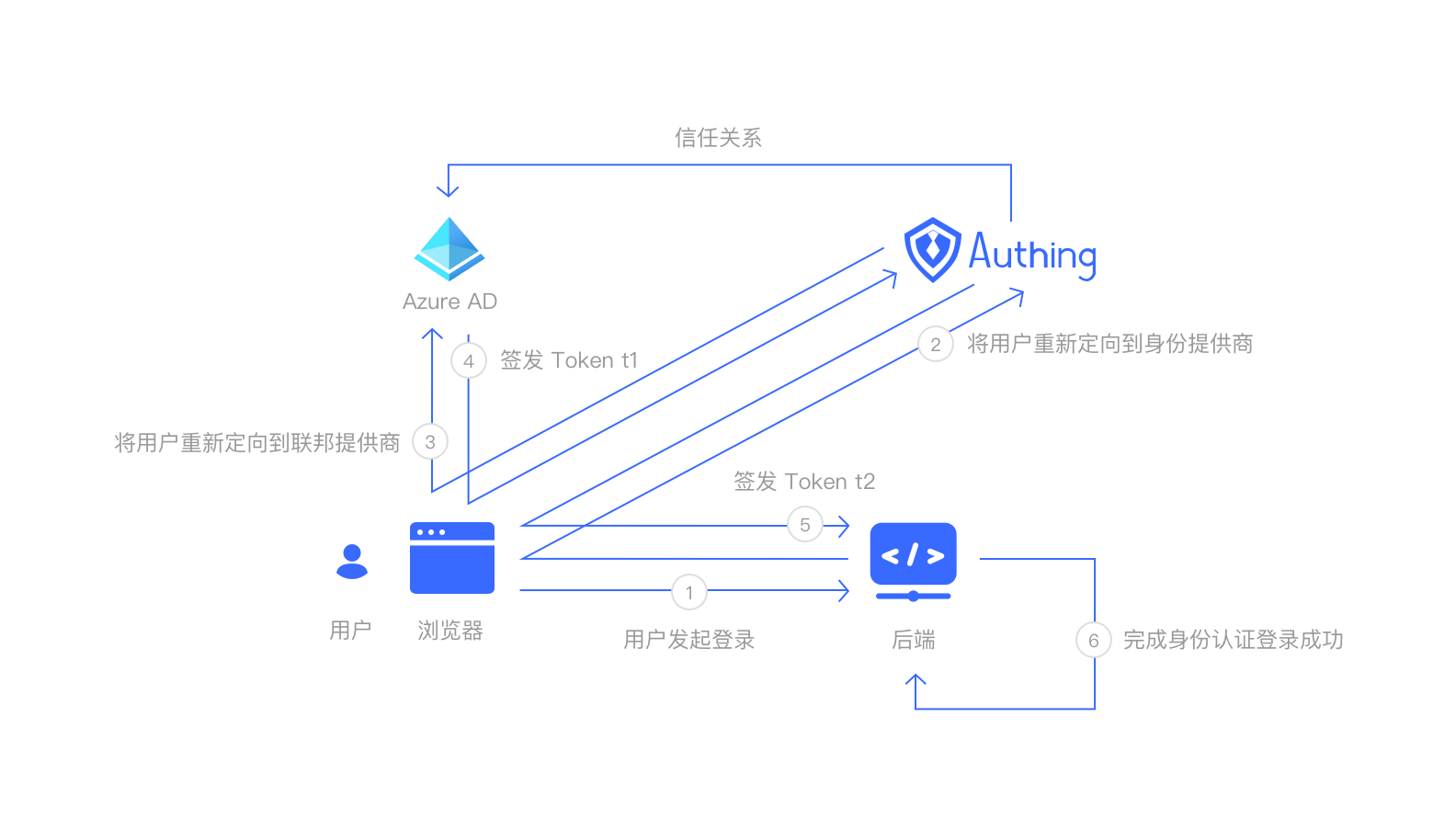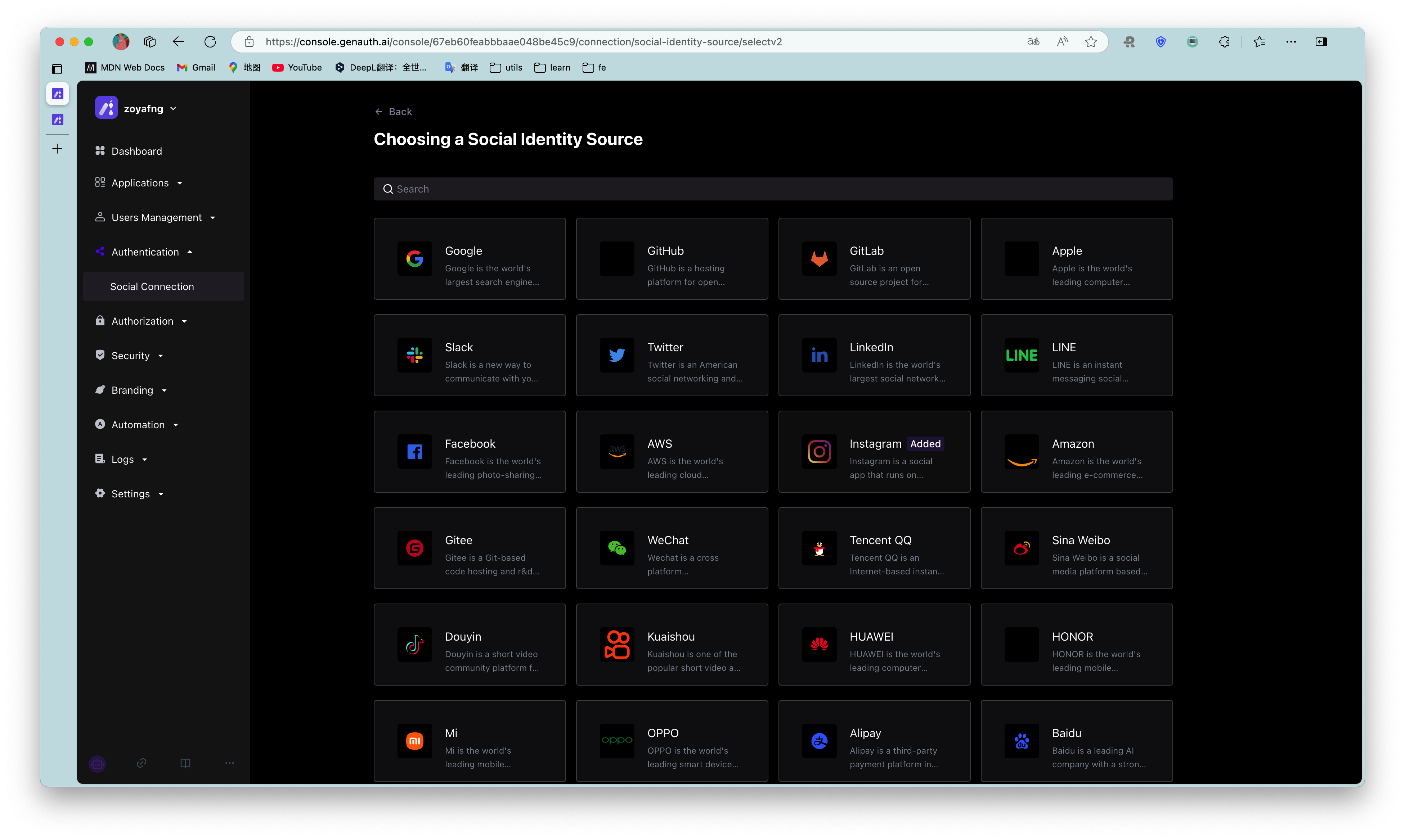¶ What is federated authentication
In the early days of the Internet, your various account information was scattered across different sites and applications, which caused the following problems:
Every time you visited a new site, you had to register a new username and password account.
This account was only stored on this site.
You could not stay logged in at different sites, and user information could not be communicated between different sites.
Federated authentication uses standard protocols to unite different identity providers to authenticate users. Federation is a trust relationship between identity providers. Identity providers that have established a federated relationship can pull user information from each other through standard protocols.

¶ Why do we need federated authentication
Federated authentication is a distributed identity authentication. When a user logs in to an identity provider, the user can choose to log in to a federated identity provider that the current identity provider trusts. Users can log in to a new system through federated authentication without having to register an account in the new system every time. For example, many websites now have their own account registration login method, and also have a WeChat scan code direct login method. Among them, WeChat is the identity federation of this website. Users **do not need to fill in **information to register an account, directly use WeChat to log in.
Using federated authentication has the following benefits:
- Users do not have to create a new account every time.
- After accessing federated authentication, users can browse in different organizations and sites.
¶ Principle of federated authentication
The following is the process of federated authentication. The user is redirected to the identity federation for authentication. The user first authenticates in the identity federation. The identity federation authentication sends an identity assertion to GenAuth, which is equivalent to the user completing the authentication in GenAuth. GenAuth then sends the identity assertion to the business system, and the business system completes the login.

¶ Federation authentication capabilities of GenAuth
GenAuth supports multiple standard protocols for federated authentication. You can use this application to quickly experience it (opens new window).
GenAuth supports a wide range of social login service providers, and can also customize OAuth2 social login.

¶ Experience federation authentication online
You can visit here (opens new window) to experience GenAuth's federation authentication capabilities online.
